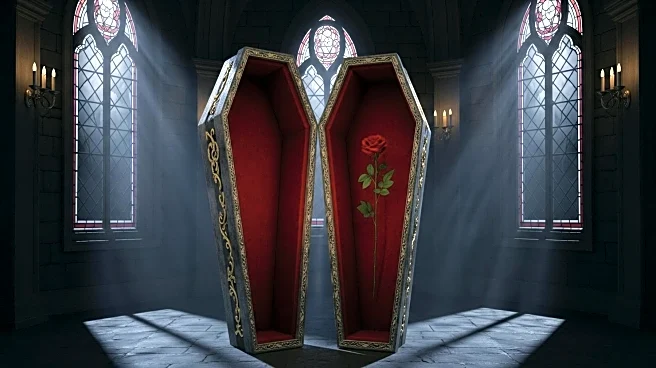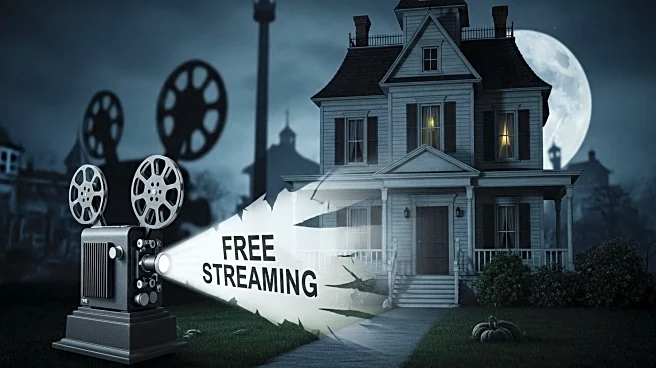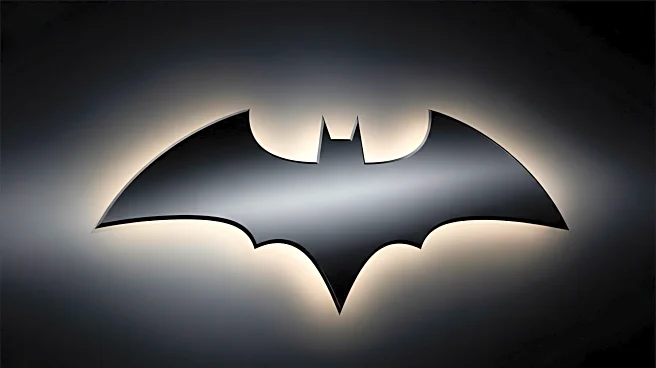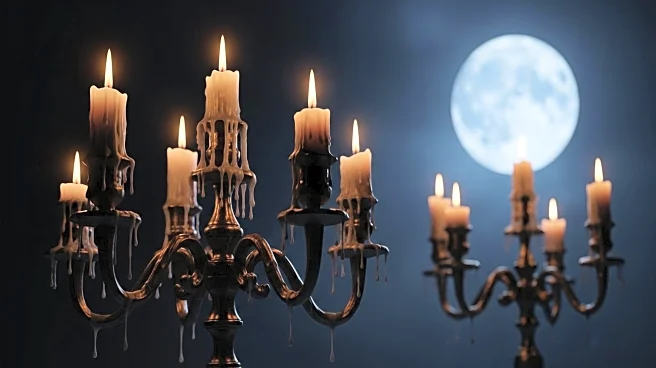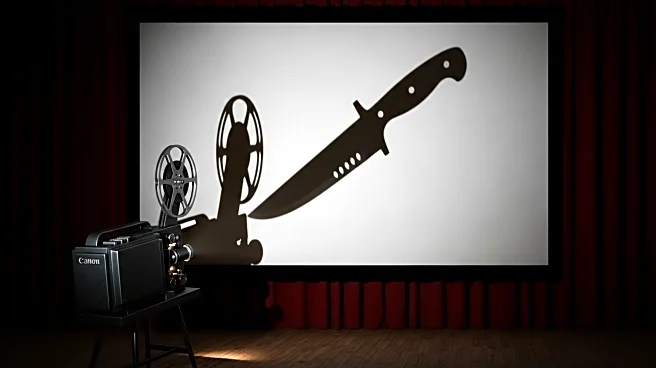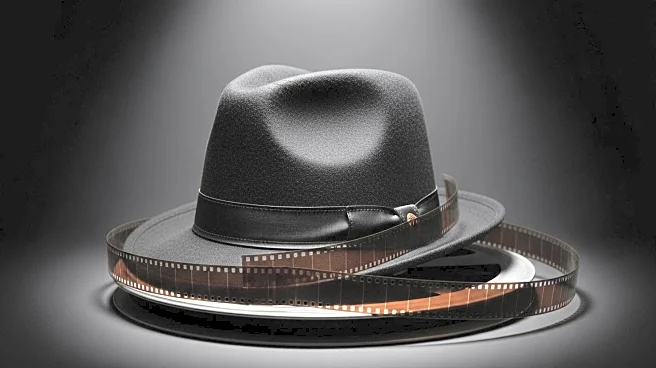What's Happening?
The article delves into the evolution of vampires in cinema, tracing their origins from early literary works to their portrayal in films. It highlights key milestones such as the 1922 film 'Nosferatu,' which was an unauthorized adaptation of Bram Stoker's 'Dracula,' and the subsequent legal battle that led to the destruction of many copies. Despite this, 'Nosferatu' became iconic, influencing vampire lore with elements like sunlight destruction. The article also discusses the impact of Universal's 'Dracula' in 1931, which introduced Bela Lugosi's portrayal of Count Dracula, embedding the foreign invader stereotype into vampire narratives. The evolution continued with Christopher Lee's portrayal in Hammer films, adding fangs and red contact lenses to the vampire image. The article notes the shift in vampire portrayal to romantic leads in the 1990s, particularly with Francis Ford Coppola's 'Bram Stoker's Dracula,' which added a reincarnation love story, and Neil Jordan's 'Interview with the Vampire.'
Why It's Important?
The evolution of vampires in cinema reflects broader societal changes and cultural anxieties. Initially, vampires symbolized fear of 'the other,' a theme that persists but adapts to contemporary issues. The portrayal of vampires as romantic leads in the 1990s marked a significant shift, indicating changing perceptions of horror and romance. This evolution showcases the adaptability of vampire mythology, allowing filmmakers to explore diverse themes such as colonialism and racism, as seen in recent films like 'Sinners.' The enduring popularity of vampire films underscores their cultural significance and ability to resonate with audiences across generations, highlighting the genre's potential to address complex social issues through allegory and entertainment.
What's Next?
The continued success of vampire films suggests that filmmakers will keep exploring new narratives and themes within this genre. The recent success of 'Sinners,' which uses vampire mythology to address colonialism and racism, indicates a trend towards integrating social commentary into horror films. As societal fears and anxieties evolve, vampire narratives are likely to adapt, offering fresh perspectives and engaging new audiences. Future films may further explore the intersection of horror with other genres, such as musicals, as seen in 'Sinners,' expanding the scope and appeal of vampire stories. This ongoing evolution presents opportunities for filmmakers to innovate and redefine the vampire genre for contemporary audiences.
Beyond the Headlines
The portrayal of vampires in cinema often reflects deeper cultural and ethical dimensions. Historically, vampires have symbolized transgression and societal fears, serving as metaphors for taboo subjects. The shift towards romantic and complex portrayals in recent decades suggests a cultural acceptance of exploring darker themes through entertainment. This evolution also raises ethical considerations about the portrayal of violence and sexuality in media, challenging filmmakers to balance artistic expression with social responsibility. As vampire narratives continue to evolve, they may influence broader cultural discussions about identity, morality, and the human condition, highlighting the genre's potential to provoke thought and inspire change.
